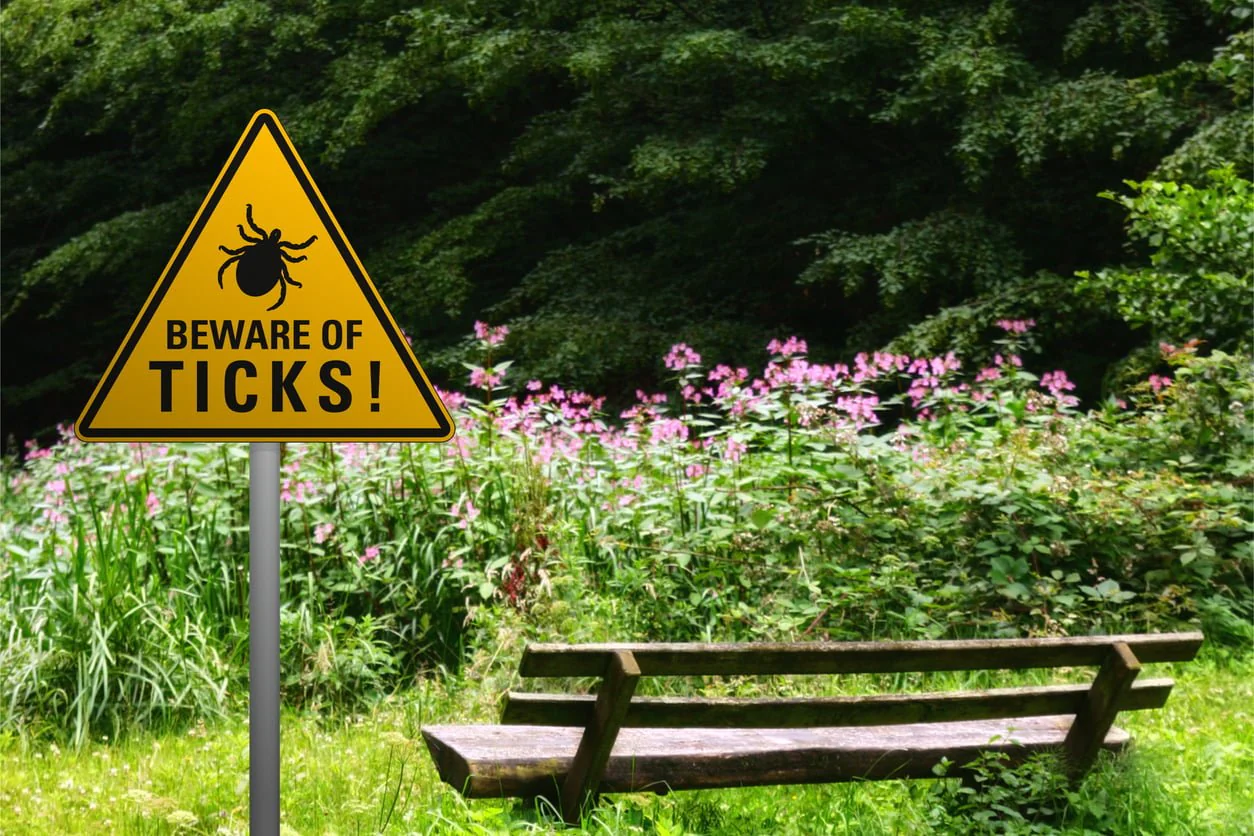
- Health advice
- Oct 14, 2013
A recent article in The Australian “Clock Ticking on Lyme disease controversy” (subscription content) shed light on recent developments which may bring about the acknowledgement that there are tick borne infections including Lyme disease, right here in Australia. This is an important breakthrough for many sufferers of Lyme disease. It will also help to create public awareness on the importance of avoiding tick bites and the correct way to remove ticks if they become attached.
 Janne Ramsay is a naturopath at Mr Vitamins. She is a confessed outdoors girl who spends many hours in the bush……..
Learn more about
Naturopath Janne Ramsay here…
Janne Ramsay is a naturopath at Mr Vitamins. She is a confessed outdoors girl who spends many hours in the bush……..
Learn more about
Naturopath Janne Ramsay here…
Are you aware of the early symptoms of a tick bite infection?
Quoting from the article “IT can start with a niggling itch behind the ear, or perhaps a funny bump along the hairline. For the millions of Australians who choose to live nestled in bushland along the east coast, tick bites are an annoying fact of life requiring constant vigilance. While many people will pry the tiny parasites from their skin without a second thought, for others the bloodsuckers' bite can have life-changing consequences as a range of toxins are introduced that can take days, weeks or months to reach their full effect.”A growing concern
Lyme’s Disease is one of the world’s fastest growing infectious diseases. A lack of general and medical knowledge of the potential impact on health makes it a serious public health issue. Areas of concern include central NSW, north NSW coast and the northern suburbs of Sydney. Mr Vitamins recently featured an article Repellent of no repellent, which is better?. In this article Mr Vitamin’s naturopath Janne Ramsay discussed the do’s and don’ts for avoiding tick and mosquito bites. In an article, Insect Bites? Essential Oils to the Rescue, Maria Mitchell identifies which essential oils work best as insect repellents. Unfortunately sometimes no matter what precautions you use, you may find a tick on your body. So what is the best way to get rid of a tick while avoiding any contamination?How to remove a tick?
- Firstly remove the tick as soon as possible. The longer the tick is on you the more chance you have of infectious transmission.
- Use a specifically designed tick remover or fine-point tweezers.
- It is important to grasp the tick at its mouthparts, as close to the skin as possible (squeezing the body can cause the release of toxins).
- Pull the tick upwards with steady pressure (resistance is common).
- Do not squeeze the tick body as this can increase pathogen transmission.
- Do not try to kill the tick with methylated spirits, petroleum jelly, kerosene or other chemicals as they can make the tick release more toxins and pathogens.
- Wash the bite area thoroughly and hands thoroughly.
- If you notice any symptoms seek medical advice promptly. Contact the Karl McManus Foundation or Lyme Disease Association of Australia to ensure diagnosis and treatment is from a doctor who acknowledges Lyme’s Disease and has been trained on the complete protocol. Your Naturopath can provide advice on how to support your body during treatment. A complete list of expected symptoms can be found on the websites for the Karl McManus Foundation or Lyme Disease Association of Australia.
- Following all of the points above it is suggested to rub Lyclear (a scabies cream) onto the nymph to paralyse the nymph before removal.
- Essential oils such as Kunzea (or tick bush) are thought to paralysis the tick but there is no research evidence.
Naturopath Janne Ramsay
 Janne Ramsay is a naturopath at Mr Vitamins. She is a confessed outdoors girl who spends many hours in the bush……..
Learn more about
Naturopath Janne Ramsay here…
Janne Ramsay is a naturopath at Mr Vitamins. She is a confessed outdoors girl who spends many hours in the bush……..
Learn more about
Naturopath Janne Ramsay here…
Related Articles
Recently Viewed
- ${ variant.price | currencyFromCents } | ${ variant.title } ${ variant.price | currency } | ${ variant.title }
Sale


RRP
${ (hoverVariant ? hoverVariant.compare_at_price : product.compare_at_price) | currencyFromCents }
${ (hoverVariant ? hoverVariant.compare_at_price : product.compare_at_price) | currency }
${ hoverVariant.compare_at_price }
${ heroVariant.compare_at_price }
${ product.compare_at_price_min | currency }
Save
%
${ (hoverVariant ? hoverVariant.price : product.price) | currencyFromCents }
${ (hoverVariant ? hoverVariant.price : product.price) | currency }
${ hoverVariant.price }
${ heroVariant.price }
${ product.price_min | currency }
Auto delivery















